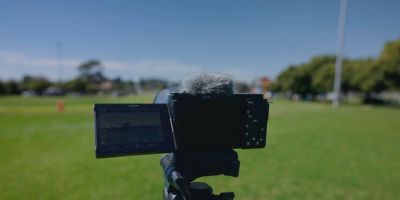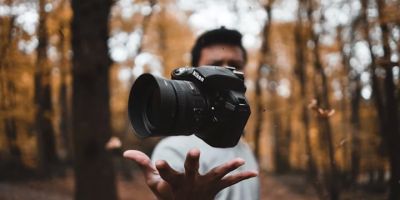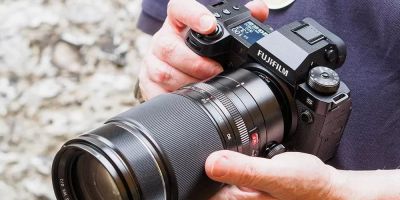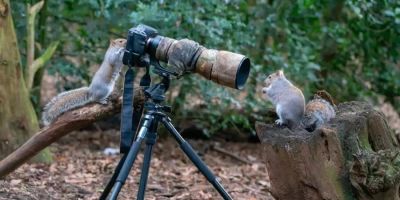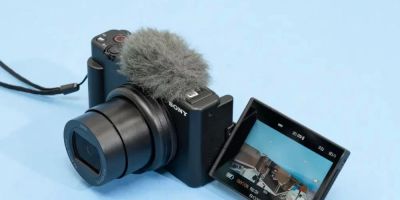How to Create Cinematic Photos with Light and Shadow: Expert Tips
- 1 - Understanding Light and Shadow in Cinematic Photography
- 2 - Choosing the Right Lighting for Cinematic Effects
- 3 - Shadow Techniques for Creating Cinematic Photos
- 4 - Framing and Composition for Cinematic Shots
- 5 - Real-Life Case Study: Cinematic Photography in Action
- 6 - Why Choose Photo Studio for Your Photography Needs
1. Understanding Light and Shadow in Cinematic Photography
To create cinematic photos, understanding the relationship between light and shadow is crucial. In cinematic photography, light and shadow are used not only to illuminate subjects but also to create mood, depth, and texture. Shadows can be dramatic, creating contrast and mystery, while light highlights the subject's features, adding dimension and focus. This interplay is what gives cinematic photos their signature look—an effect that can make even a simple scene feel larger than life.
In cinema, lighting is often used to guide the viewer’s emotions, and the same principle applies to photography. Whether it’s soft and diffused light for a dreamy feel or harsh, stark shadows for a more intense atmosphere, how you use light and shadow can make your photos feel cinematic, much like scenes from a movie.
2. Choosing the Right Lighting for Cinematic Effects
The first step to creating cinematic photos is selecting the right type of lighting. The mood of your photo will be largely determined by how light interacts with the subject. Here are some tips for using light effectively:
- Natural Light: Soft, natural light is often the easiest way to create cinematic photos. Early morning or late afternoon, when the sun is lower in the sky, provides beautiful, diffused light that casts long shadows, perfect for a cinematic look.
- Artificial Light: Using artificial lighting, such as studio lights or lamps, can help you manipulate shadows and highlights more precisely. By adjusting the light’s intensity, direction, and color temperature, you can achieve dramatic or moody effects.
- Backlighting: Placing the light source behind your subject can create a silhouette or rim lighting, adding mystery and drama to your photos.
- Side Lighting: Side lighting emphasizes texture and depth by creating strong contrasts between light and shadow. This effect is particularly useful for portraiture or still life photography.
Experimenting with different light sources and intensities is key to achieving cinematic photos. The goal is to create depth and texture in the image, making it visually striking and emotionally engaging.
3. Shadow Techniques for Creating Cinematic Photos
Shadows are as important as light in creating cinematic photos. They help define the shape of objects, create mood, and add intrigue. Here are some techniques for using shadows effectively:
- Use Strong Contrast: In cinematic photography, high contrast between light and shadow often creates a dramatic effect. You can achieve this by positioning your light source at an angle, creating sharp shadows that draw attention to certain areas of your composition.
- Shaping with Shadows: Shadows can be used to shape your subject. For instance, if you're photographing a person, you can position the light to create shadows on their face or body, which adds depth and highlights their features.
- Shadow Play with Objects: Utilize objects or architectural elements to cast interesting shadows. For example, shadows from blinds, fences, or trees can create patterns that add texture and dimension to your photos.
- Soft Shadows: If you're looking for a more subtle effect, use soft, diffused light to create gentle shadows that provide a dreamy or romantic vibe, often used in portrait photography.
The way you manipulate shadows can completely transform the mood of your image. Strong, deep shadows tend to evoke drama and suspense, while soft shadows give a more relaxed, gentle atmosphere.
4. Framing and Composition for Cinematic Shots
In addition to light and shadow, the composition of your photo is crucial for achieving a cinematic feel. Cinematic photos often use wide shots or tight framing to create a sense of storytelling. Here are some tips to improve your framing and composition:
- Rule of Thirds: Place your subject off-center to create balance and draw the viewer’s eye into the image. This technique mimics the way scenes are often framed in films.
- Wide Aperture: Using a wide aperture (low f-stop number) allows you to create a shallow depth of field, blurring the background and focusing the viewer’s attention on your subject. This is a technique commonly used in cinematic photography to create emphasis and isolation.
- Leading Lines: Use lines, such as roads, paths, or architectural elements, to lead the viewer’s eye into the image. This technique helps create a sense of depth and guides the viewer through the scene, much like a director guides the audience’s attention in a film.
Remember, framing is not just about where you place your subject, but how you use the space around them. Consider the elements in the background, foreground, and sides to enhance the visual storytelling of your photo.
5. Real-Life Case Study: Cinematic Photography in Action
Take the example of Sarah, an aspiring photographer who wanted to capture more cinematic photos. She began experimenting with light and shadow by shooting during the golden hour, just before sunset, when the light was soft and warm. By positioning her subjects at an angle to the light, she created long shadows that added drama and depth to her photos.
Sarah also started using side lighting in her indoor shoots, placing the light source at a 45-degree angle to her subject. This created stark contrasts and emphasized the textures in her portraits. Over time, she refined her technique and developed a distinct cinematic style, with dark, moody shadows and bright, focused highlights. Her portfolio now reflects the power of using light and shadow to evoke emotion and tell stories visually.
6. Why Choose Photo Studio for Your Photography Needs
If you're looking to elevate your photography skills or create cinematic photos, Photo Studio offers the perfect resources for both beginners and experienced photographers. We provide expert advice, workshops, and photography equipment that can help you master the art of light and shadow in your photos.
Whether you need studio lighting setups, accessories, or personal coaching to refine your cinematic style, Photo Studio is here to support you. Visit Photo Studio today to find the best tools and services for your photographic journey!

